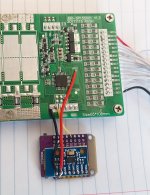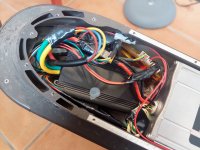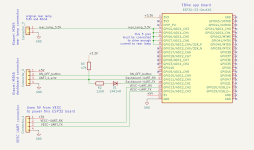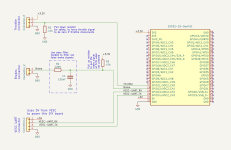PadreParada
10 mW
- Joined
- Jun 11, 2021
- Messages
- 24
CiDi said:If you use innomaker you must enter 85116011
Done, but I don't Receive any frame with ID 0x2DD000.
Do I have to look for a different ID because of Innomaker?
PadreParada
CiDi said:If you use innomaker you must enter 85116011
PadreParada said:CiDi said:If you use innomaker you must enter 85116011
Done, but I don't Receive any frame with ID 0x2DD000.
Do I have to look for a different ID because of Innomaker?
PadreParada
CiDi said:PadreParada said:CiDi said:If you use innomaker you must enter 85116011
Done, but I don't Receive any frame with ID 0x2DD000.
Do I have to look for a different ID because of Innomaker?
PadreParada
Do you have firmware 46.2?
PadreParada said:CiDi said:PadreParada said:CiDi said:If you use innomaker you must enter 85116011
Done, but I don't Receive any frame with ID 0x2DD000.
Do I have to look for a different ID because of Innomaker?
PadreParada
Do you have firmware 46.2?
No
Ok. Have you tried all other firmwares in the GitHub repository?CiDi said:PadreParada said:CiDi said:PadreParada said:Done, but I don't Receive any frame with ID 0x2DD000.
Do I have to look for a different ID because of Innomaker?
PadreParada
Do you have firmware 46.2?
No
Currently the only firmware that works is 46.2
If you connect VCC+ with GND, the controller turns on in BESST mode.Any thoughts on running the motor without the canbus display like shorting the P+ and PL on the UART version of the motor?
Interesting. With the UART motors, connecting P+ to GND burnt out the controller. Courtesy of the eggrider display.If you connect P+ with GND, the controller turns on in BESST mode.
If you connect P+ with GND via resistor of 1 ohm for a few seconds, the controller turns on and off.
I can also make the modifications with the can analyzer, but only those of the levels, the same ones that you can modify with BESST PRO, the other modifications it does not accept.Hi CiDi, Did you have any success changing parameters with the can analyser on the 46.2 firmware?
The EBike modular DIY electronics (EBike / EScooter modular DIY OpenSource electronics and software), is featured as the Project of the Week on the Python on Microcontrollers Newsletter.


 lunacycle.com
lunacycle.com
indeed this works.. but why? ;-(can msg 1 . can _ id = 0x 85103203;








